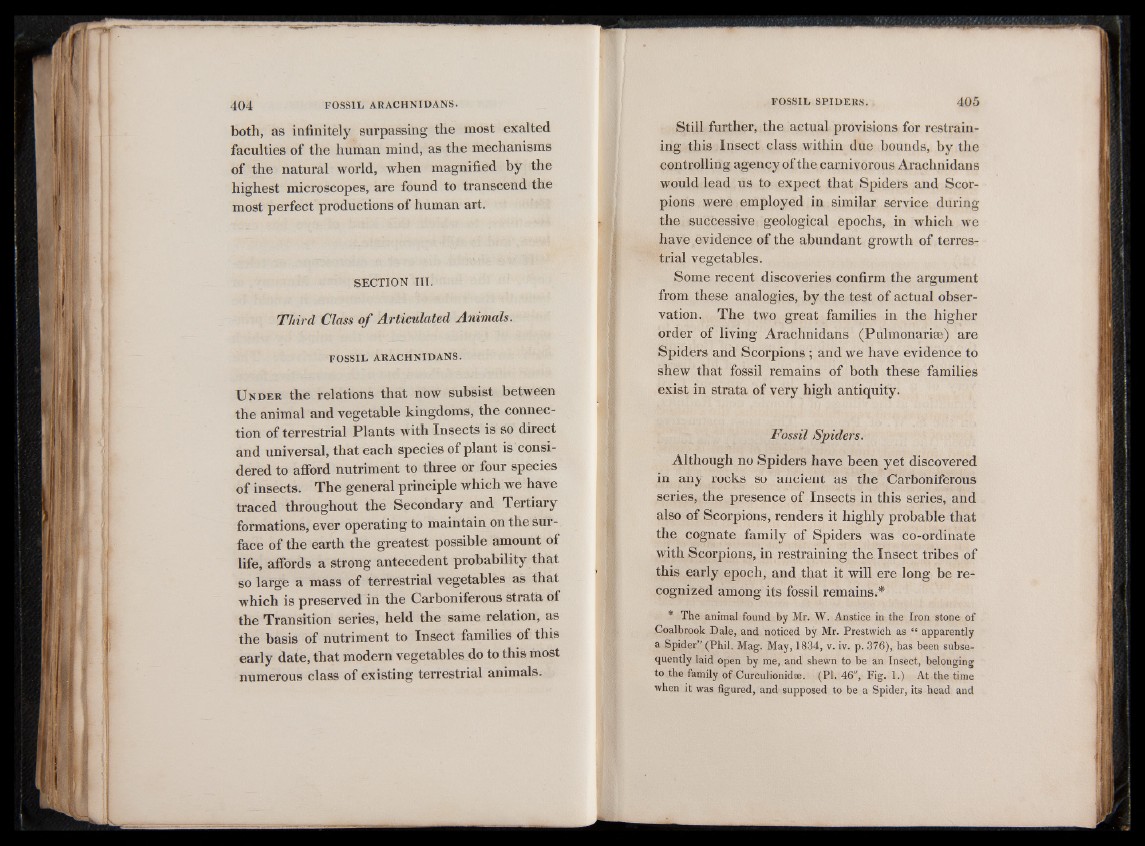
both, as infinitely surpassing the most exalted
faculties of the human mind, as the mechanisms
of the natural world, when magnified by the
highest microscopes, are found to transcend the
most perfect productions of human art.
SECTION III.
Third Class o f Articulated Animals.
FOSSIL ARACHNIDANS.
Under the relations that now subsist between
the animal and vegetable kingdoms, the connection
of terrestrial Plants with Insects is so direct
and universal, that each species of plant is considered
to afford nutriment to three or four species
of insects. The general principle which we have
traced throughout the Secondary and Tertiary
formations, ever operating to maintain on the sur- ,
face of the earth the greatest possible amount of
life, affords a strong antecedent probability that
so large a mass of terrestrial vegetables as that
which is preserved in the Carboniferous strata of
the Transition series, held the same relation, as
the basis of nutriment to Insect families of this
early date, that modern vegetables do to this most
numerous class of existing terrestrial animals.
Still further, the actual provisions for restraining
this Insect class within due bounds, by the
controlling agency of the carnivorous Arachnidans
would lead us to expect that Spiders and Scorpions
were employed in similar service during
the successive geological epochs, in which we
have evidence of the abundant growth of terrestrial
vegetables.
Some recent discoveries confirm the argument
from these analogies, by the test of actual observation.
The two great families in the higher
order of living Arachnidans (Pulmonariae) are
Spiders and Scorpions; and we have evidence to
shew that fossil remains of both these families
exist in strata of very high antiquity.
Fossil Spiders.
Although no Spiders have been yet discovered
in any rocks so ancient as the Carboniferous
series, the presence of Insects in this series, and
also of Scorpions, renders it highly probable that
the cognate family of Spiders was co-ordinate
with Scorpions, in restraining the Insect tribes of
this early epoch, and that it will ere long be recognized
among its fossil remains.*
* The animal found by Mr. W. Anstice in the Iron stone of
Coalbrook Dale, and noticed by Mr. Prestwich as “ apparently
a Spider” (Phil. Mag. May, 1834, v. iv. p. 376), has been subsequently
laid open by me, and shewn to be an Insect, belonging
to the family of Curculionidse. (PI. 46", Fig. 1.) At the time
when it was figured, and supposed to be a Spider, its head and